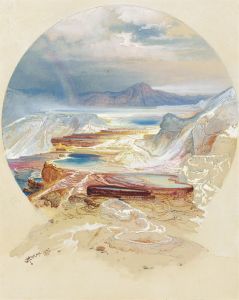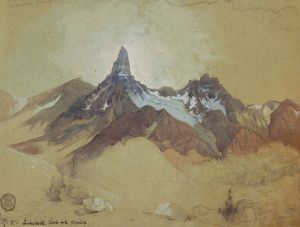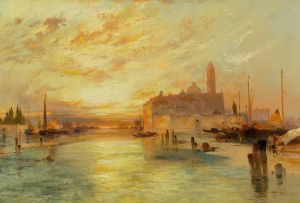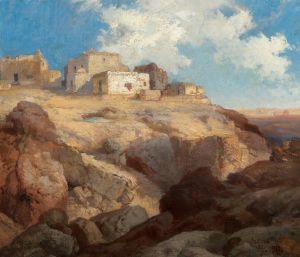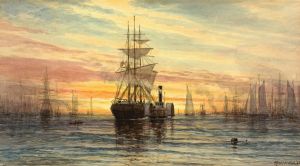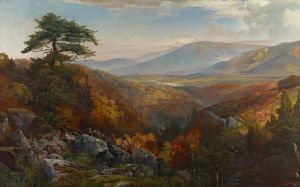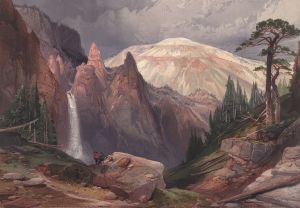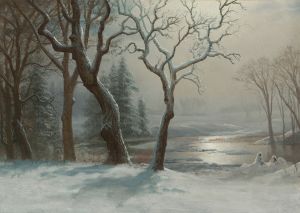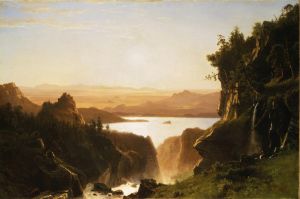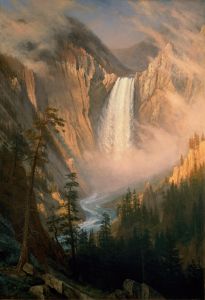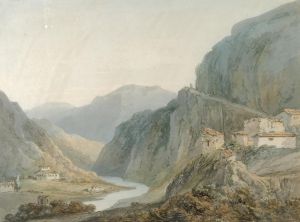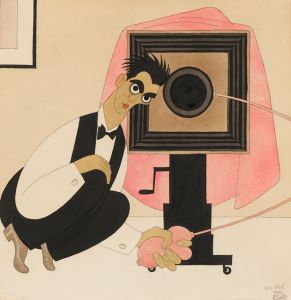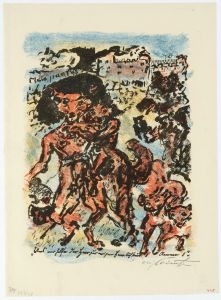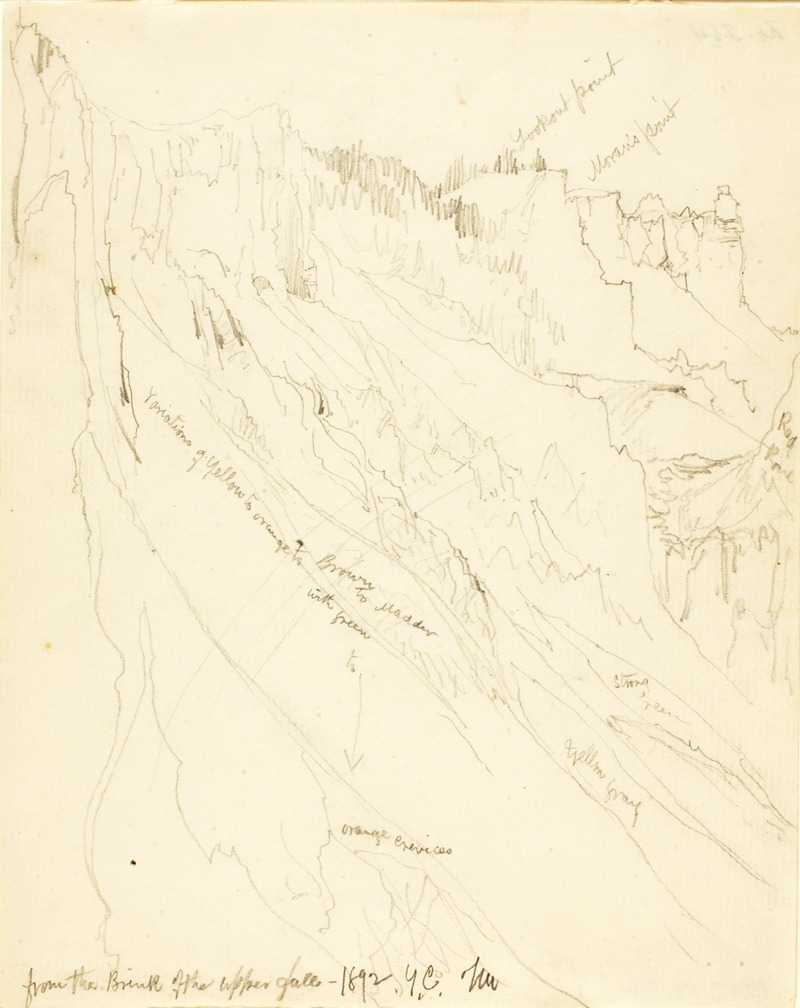
From the Brink of the Upper Falls
A hand-painted replica of Thomas Moran’s masterpiece From the Brink of the Upper Falls, meticulously crafted by professional artists to capture the true essence of the original. Each piece is created with museum-quality canvas and rare mineral pigments, carefully painted by experienced artists with delicate brushstrokes and rich, layered colors to perfectly recreate the texture of the original artwork. Unlike machine-printed reproductions, this hand-painted version brings the painting to life, infused with the artist’s emotions and skill in every stroke. Whether for personal collection or home decoration, it instantly elevates the artistic atmosphere of any space.
Thomas Moran's painting "From the Brink of the Upper Falls" is a notable work by the American painter, renowned for his dramatic landscapes of the American West. Moran, born in 1837 in Bolton, England, immigrated to the United States with his family as a child. He became one of the leading figures of the Hudson River School, a mid-19th century American art movement embodied by a group of landscape painters whose aesthetic vision was influenced by romanticism.
Moran's work is particularly associated with the exploration and depiction of the Yellowstone region. His paintings played a significant role in the establishment of Yellowstone as the first national park in 1872. "From the Brink of the Upper Falls" is one of the many works that capture the grandeur and beauty of this region.
The painting depicts the Upper Falls of the Yellowstone River, a prominent feature in Yellowstone National Park. The Upper Falls, located in the Grand Canyon of the Yellowstone, is approximately 109 feet (33 meters) high and is one of the two major waterfalls on the river, the other being the Lower Falls. Moran's painting captures the dynamic and powerful flow of water as it cascades over the precipice, surrounded by rugged cliffs and lush vegetation.
Moran's technique in this painting, as in many of his works, demonstrates his mastery of light and color. He often used a bright palette to convey the vividness of the natural landscape, and his attention to detail helps to evoke the texture and form of the terrain. The painting reflects Moran's ability to blend realism with the sublime, capturing both the physical reality and the emotional impact of the scene.
"From the Brink of the Upper Falls" is not only a testament to Moran's skill as an artist but also to his role as an advocate for the preservation of America's natural landscapes. His paintings, along with those of contemporaries like Albert Bierstadt, helped to inspire the conservation movement in the United States by bringing the beauty of these remote areas to the attention of the public and policymakers.
Moran's work was instrumental in shaping the perception of the American West as a place of awe-inspiring beauty and untamed wilderness. His paintings were often based on sketches and studies made during expeditions, including the famous 1871 Hayden Geological Survey of Yellowstone, which he joined as the official artist. These expeditions provided Moran with firsthand experience of the landscapes he depicted, allowing him to create works that were both accurate and evocative.
Today, "From the Brink of the Upper Falls" is appreciated not only for its artistic merit but also for its historical significance. It serves as a reminder of the early efforts to document and preserve the natural wonders of the United States, and it continues to inspire viewers with its depiction of the majestic beauty of Yellowstone. Moran's legacy as a painter is closely tied to his ability to capture the spirit of the American wilderness, and this painting is a prime example of his contribution to American art and environmental awareness.





